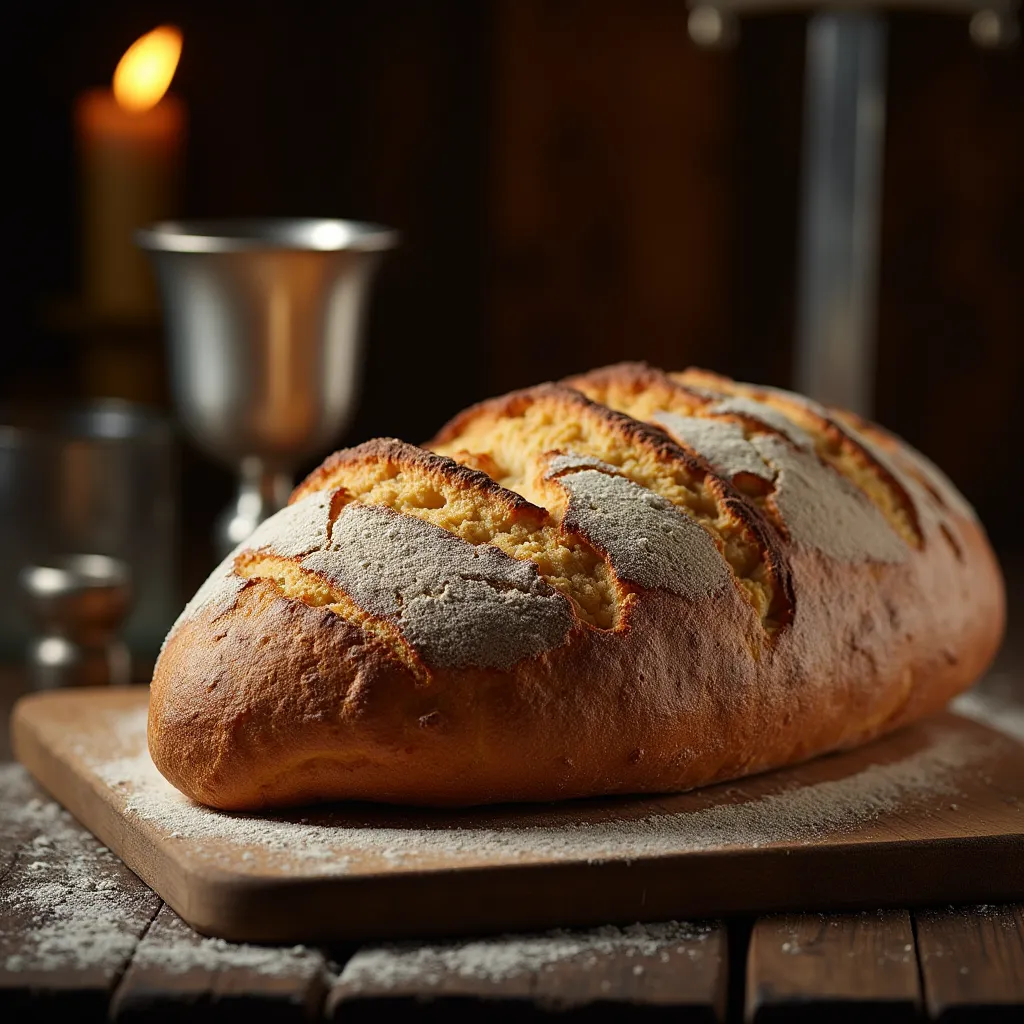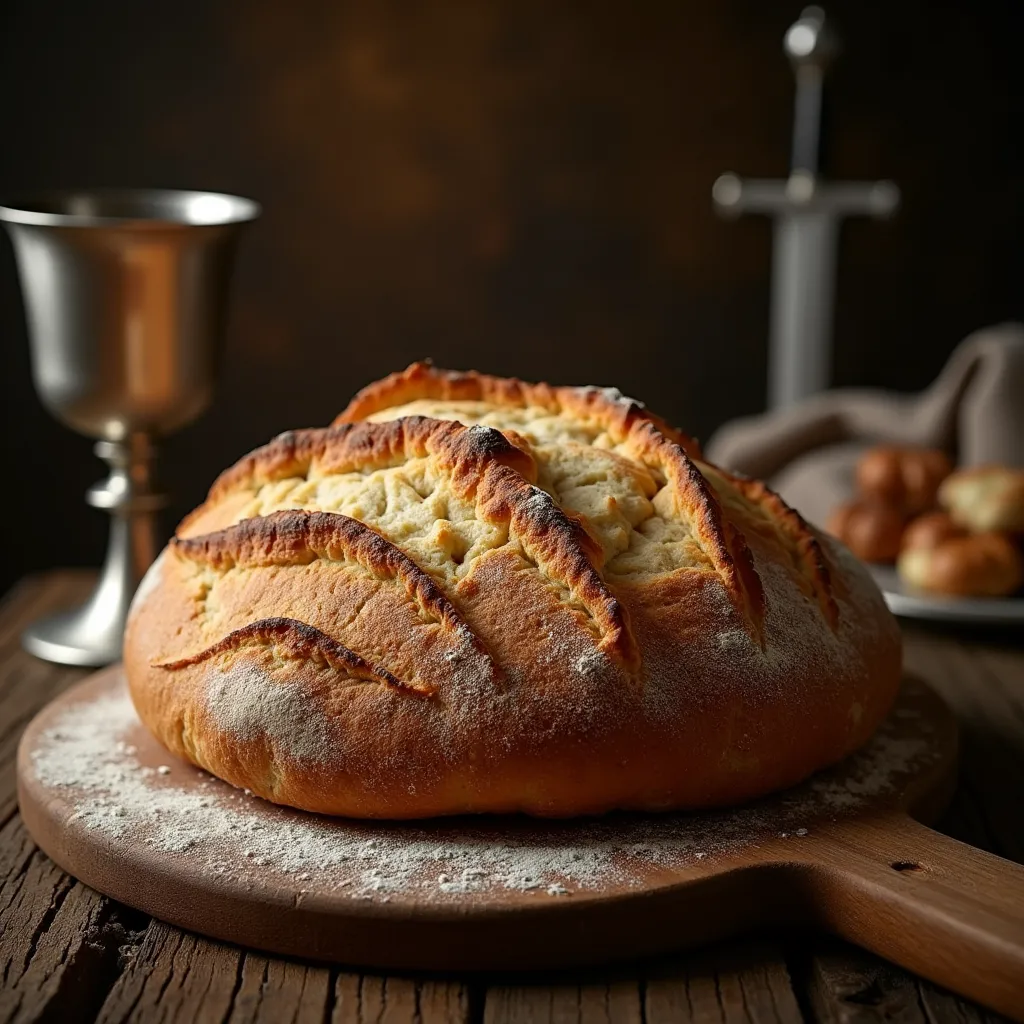Broaden Your Horizon
King Arthur Bread carries on a tradition that has been a staple in human diets for thousands of years, with origins tracing back to ancient Egypt. Over time, bread-making techniques evolved, becoming both an art and a science. Today, King Arthur Baking Company, established in 1790, has become synonymous with quality ingredients and baking expertise. Their commitment to consistency and innovation makes their products a favorite among home bakers and professionals alike. Did you know that King Arthur flour was the first flour brand sold in America? With such a rich legacy, incorporating their ingredients into your baking isn’t just about making bread; it’s about becoming part of a centuries-old tradition.

In this article, you’ll discover seven transformative hacks to elevate your King Arthur bread-making game. Whether you’re a beginner or a seasoned baker, these tips are designed to help you achieve bakery-quality results right in your kitchen.
Table of Contents
Hack #1: The Perfect Flour Blend for Every Bread Type
Why Choosing the Right Flour Matters
The foundation of any great bread is its flour. King Arthur offers a wide variety of flours, each tailored to specific baking needs. From their high-gluten bread flour to the milder all-purpose flour, choosing the correct type ensures your bread has the desired texture, flavor, and structure.
Recommended Flour Blends
For a balanced approach, consider mixing different flours to achieve the perfect result for your bread type. Here’s a quick guide:
| Bread Type | Flour Combination | Ratio |
|---|---|---|
| Classic White Loaf | Bread Flour + All-Purpose Flour | 2:1 |
| Rustic Artisan Bread | Whole Wheat Flour + Bread Flour | 1:1 |
| Sweet Brioche | Bread Flour + Pastry Flour | 3:1 |
Experimenting with these combinations allows you to create a loaf that aligns perfectly with your taste and texture preferences.
Hack #2: Quick-Proof Your Dough with Steam
How Steam Accelerates Proofing
Proofing, or letting the dough rise, is a critical step in bread-making. A warm, humid environment can speed up this process, especially on colder days. You can easily create this environment by placing your dough in an oven with a pan of warm water or using a damp kitchen towel to cover the bowl.
Avoid Overproofing
While proofing is essential, overdoing it can lead to flat, deflated bread. Keep an eye on your dough and aim for it to double in size. This sweet spot ensures the right balance of structure and flavor.
Hack #3: Boost Flavor with a Long Fermentation Process
Benefits of Cold Fermentation
One of the secrets to bakery-quality bread is time. Cold fermentation, where you let the dough rest in the refrigerator overnight, develops deeper flavors and enhances the bread’s texture. This method is especially effective for sourdough or artisan loaves.
Recipes to Try with Long Fermentation
- Sourdough Bread: Cold fermentation enhances its tangy flavor.
- Rustic Baguettes: Achieve a chewy interior and crispy crust.
- Ciabatta: The long rest period creates its signature airy texture.
Allowing the dough to ferment at a slower pace not only boosts flavor but also makes the baking process more flexible for your schedule.
Hack #4: Never Fail with Pre-Measured Ingredients
Ingredient Ratios for Perfect Bread
Bread baking requires precision. Even slight miscalculations can lead to disappointing results. King Arthur’s recipes are meticulously tested, so following their recommended ratios ensures success.
Time-Saving Tip: Batch Measure Dry Ingredients
To streamline your baking, consider pre-measuring and storing your dry ingredients. Combine flour, sugar, salt, and yeast in airtight containers. When you’re ready to bake, just add wet ingredients—saving time and reducing cleanup.
Hack #5: Master the Art of Scoring for Perfect Crusts
Why Scoring Matters
Scoring isn’t just about aesthetics; it’s a functional step that allows your bread to expand as it bakes. Proper scoring prevents unwanted cracks and adds a professional touch to your loaves.
Tools and Techniques for Scoring
- Tools: A lame (bread blade) or a sharp knife works best.
- Patterns to Try: Experiment with simple slashes, wheat stalk designs, or swirls to make your bread visually stunning.
Practice makes perfect, and with time, scoring will become a satisfying part of your baking ritual.
Hack #6: Baking Stones and Dutch Ovens for Bakery-Quality Loaves
Why Tools Make a Difference
Using the right tools can significantly improve your bread’s quality. Baking stones distribute heat evenly, while Dutch ovens trap steam to create a perfect crust.
Budget-Friendly Alternatives
If you don’t have these tools, don’t worry. An upside-down baking sheet can mimic a stone’s heat distribution, and oven-safe pots can serve as makeshift Dutch ovens. These affordable options still yield impressive results.
Hack #7: Enhance Flavor with Unique Add-Ins
Sweet and Savory Options
Take your bread to the next level by adding flavors and textures:
- Sweet: Dried fruits, chocolate chips, or a swirl of cinnamon.
- Savory: Shredded cheese, garlic, or fresh herbs like rosemary.
Proportions and Mixing Tips
| Add-In | Proportion (Per 500g Flour) | Mixing Method |
| Dried Cranberries | 50g | Fold into dough after first rise |
| Parmesan Cheese | 30g | Incorporate during kneading |
| Fresh Rosemary | 10g | Sprinkle before baking |
These additions allow you to customize your bread and surprise your taste buds with every bite.
FAQ: Common Questions About King Arthur Bread Baking
What makes King Arthur flour stand out?
King Arthur flour is known for its consistent quality and 100% employee-owned status. Their strict milling standards ensure you get the same excellent results every time.
Can I substitute different King Arthur flours in recipes?
Yes, but substitutions may affect texture and hydration. For example, using whole wheat flour instead of all-purpose flour will require additional water due to its higher absorption rate.
How do I store King Arthur bread for maximum freshness?
Wrap your bread tightly and store it at room temperature for 3–5 days. For longer storage, freeze the loaf and thaw it as needed.
Conclusion: Your Bread-Baking Journey Awaits
With these seven transformative hacks, you’re now equipped to elevate your bread-baking skills. King Arthur’s quality ingredients and your newfound techniques create the perfect recipe for success. Whether you’re crafting a rustic loaf or experimenting with unique flavors, these tips will help you achieve bakery-quality results at home.
So, what are you waiting for? Preheat your oven, gather your ingredients, and let the magic of King Arthur bread-making transform your kitchen. Share your creations with us at Broadhorizonblog and inspire others to broaden their horizons through baking!

